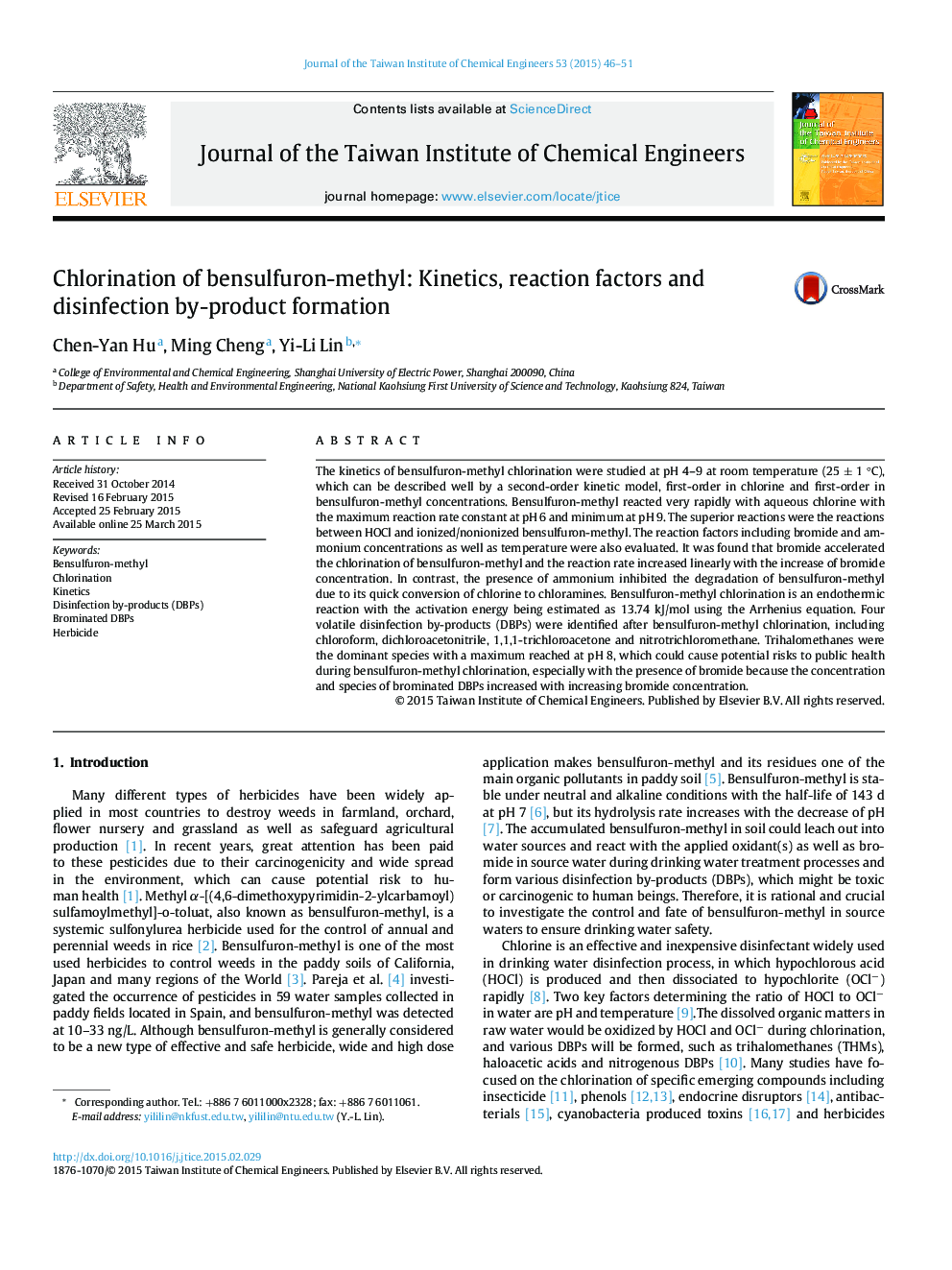| کد مقاله | کد نشریه | سال انتشار | مقاله انگلیسی | نسخه تمام متن |
|---|---|---|---|---|
| 691016 | 1460421 | 2015 | 6 صفحه PDF | دانلود رایگان |
• Bensulfuron-methyl chlorination follows second-order kinetics.
• Bensulfuron-methyl chlorination in the presence of bromide also follows second-order kinetics.
• Bensulfuron-methyl degradation was greatly inhibited by ammonia but not temperature.
• Four volatile DBPs were identified including CF, 1,1,1-TCP, DCAN and TCNM.
• The formation of brominated DBPs could cause higher carcinogenic risks to public health.
The kinetics of bensulfuron-methyl chlorination were studied at pH 4–9 at room temperature (25 ± 1 °C), which can be described well by a second-order kinetic model, first-order in chlorine and first-order in bensulfuron-methyl concentrations. Bensulfuron-methyl reacted very rapidly with aqueous chlorine with the maximum reaction rate constant at pH 6 and minimum at pH 9. The superior reactions were the reactions between HOCl and ionized/nonionized bensulfuron-methyl. The reaction factors including bromide and ammonium concentrations as well as temperature were also evaluated. It was found that bromide accelerated the chlorination of bensulfuron-methyl and the reaction rate increased linearly with the increase of bromide concentration. In contrast, the presence of ammonium inhibited the degradation of bensulfuron-methyl due to its quick conversion of chlorine to chloramines. Bensulfuron-methyl chlorination is an endothermic reaction with the activation energy being estimated as 13.74 kJ/mol using the Arrhenius equation. Four volatile disinfection by-products (DBPs) were identified after bensulfuron-methyl chlorination, including chloroform, dichloroacetonitrile, 1,1,1-trichloroacetone and nitrotrichloromethane. Trihalomethanes were the dominant species with a maximum reached at pH 8, which could cause potential risks to public health during bensulfuron-methyl chlorination, especially with the presence of bromide because the concentration and species of brominated DBPs increased with increasing bromide concentration.
Graphical AbstractFigure optionsDownload as PowerPoint slide
Journal: Journal of the Taiwan Institute of Chemical Engineers - Volume 53, August 2015, Pages 46–51
